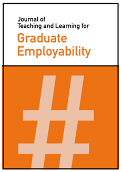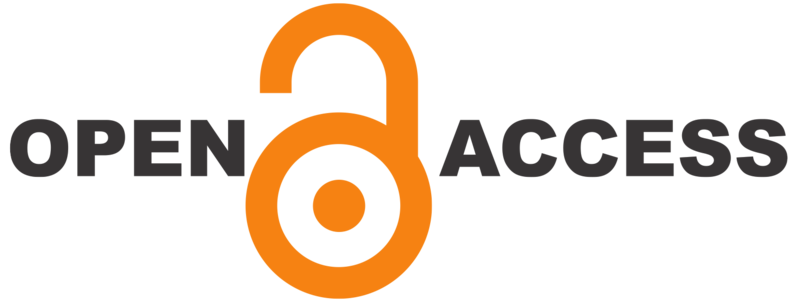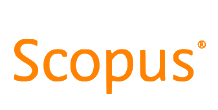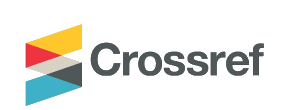Out of time: (Re)working disabled graduate employability
DOI:
https://doi.org/10.21153/jtlge2023vol14no2art1802Abstract
As interest in disability employment increases across the world following the COVID-19 pandemic, understanding the employability of disabled graduates becomes an imperative for governments, universities and employers alike. This article investigates employability through the lens of the lived experience of disabled graduates, with one author (Alexandra) serving as a case study. Alexandra’s experience in higher education has been defined by living in crip time, a unique disabled experience of time as non-linear. Alexandra’s story describes how surviving within institutions which operate on normative understandings of time as linear, chronological, and inextricably tied to productivity has caused harm to disabled students. Disabled students are made to feel as though they are ‘falling behind time,’ ‘wasting time,’ and ‘losing time,’ resulting in a struggle to ‘catch up time,’ which impacts upon their wellbeing, confidence, and their sense of self. This struggle disadvantages disabled students from spending time building their ‘employability skills’ throughout their degree. As disabled students complete their studies and seek graduate employment, they come into further contact with industry who further compound harm through placement experiences and the graduate hiring process by not accommodating for crip time. This case study poses conventional mentoring programmes as a site in which disabled students such as Alexandra face barriers to engagement. We argue for a co-designed model of accessible, non-hierarchical peer mentoring, where crip time is accommodated and supported. Such accessible mentoring may serve as an effective intervention and an opportunity for disabled students to develop essential employability skills.Metrics
References
Ashe, F. (2012). Harnessing Political Theory to Facilitate Students’ Engagement with Graduate ‘Employability’: A Critical Pyramid Approach. Politics, 32(2), 129–137. https://doi.org/10.1111/j.1467-9256.2012.01435.x
Australia and New Zealand School of Government. (2020, March 23). The promise of co-design for public policy. https://anzsog.edu.au/research-insights-and-resources/research/the-promise-of-co-design-for-public-policy/
Australian Bureau of Statistics. (2019, October 24). Disability, Ageing and Carers, Australia: Summary of Findings. ABS. https://www.abs.gov.au/statistics/health/disability/disability-ageing-and-carers-australia-summary-findings/latest-release
Australian Government. (2013). Core Skills For Work Development Framework. Department of Industry, Innovation Climate Change, Science, Research and Tertiary Education and Department of Education, Employment and Workplace Relations. https://www.dese.gov.au/download/6978/core-skills-work-developmental-framework-overview/10897/document/pdf
Australian Government. (2021). Disability and Australia’s Disability Strategy 2021-2031. Department of Social Services. https://www.dss.gov.au/disability-and-australias-disability-strategy-2021-2031
Australian Government. (2022). Individual Capacity Building. Department of Social Services. https://www.dss.gov.au/disability-and-carers-programs-services-for-people-with-disability/individual-capacity-building
Barbarin, I. (2021, August 30). Death by a Thousand Words: COVID-19 and the Pandemic of Ableist Media. Refinery29. https://www.refinery29.com/en-us/2021/08/10645352/covid-19-and-the-pandemic-of-ableist-media
Bennett, A., & Burke, P. J. (2018). Re/conceptualising time and temporality: an exploration of time in higher education. Discourse: Studies in the Cultural Politics of Education, 39(6), 913-925. https://doi.org/10.1080/01596306.2017.1312285
Brewer, G. (2022). Disability in Higher Education: Investigating Identity, Stigma and Disclosure amongst Academics. Open University Press.
Brown, N., & Leigh, J. (2020). Ableism in Academia: Theorising experiences of disabilities and chronic illnesses in higher education. UCL Press.
Browne, V. (2016). Feminism, time, and nonlinear history. Palgrave Macmillan Press.
Cassiani, C., Stinson, J., & Lindsay, S. (2020). E-mentoring for youth with physical disabilities preparing for employment: a content analysis of support exchanged between participants of a mentored and non-mentored group. Disability and Rehabilitation, 42(14), 1963-1970. https://doi.org/10.1080/09638288.2018.1543360
Chatzidakis, A., Hakim, J., Littler, J., Rottenberg, C., & Segal, L. (2020). The Care Manifesto: The politics of interdependence. Verso Press.
Children and Young People with Disability Australia. (2022, April 22). Labor’s Disability Plan – what in it for young people? Children and Young People With Disability Australia. https://cyda.org.au/labors-disability-plan-whats-in-it-for-children-and-young-people-2/
Deakin University. (2023). Students Mentoring Staff. Office of the Dean of Students. https://blogs.deakin.edu.au/studentsaspartners/2021/11/09/students-mentoring-staff/
Dewidar, O., Elmestekawy, N., & Welch, V. (2022). Improving equity, diversity, and inclusion in academia. Research Integrity and Peer Review, 7(1), 1-10. https://doi.org/10.1186/s41073-022-00123-z
Dollinger, M. (2020). The projectification of the university: consequences and alternatives. Teaching in Higher Education, 25(6), 669-682. https://doi.org/10.1080/13562517.2020.1722631
Edelman, L. (2004). No future: Queer theory and the death drive. Duke University Press. https://doi.org/10.1515/9780822385981
Griffiths, E. (2020). ‘But you don’t look disabled’: Non-visible disabilities, disclosure and being an ‘insider’ in disability research and ‘other’ in the disability movement and academia. In N. Brown & J. Leigh (Eds.), Ableism in Academia: Theorising experiences of disabilities and chronic illnesses in higher education (pp. 124-142). University College London Press.
Halberstam, J. (2005). In a Queer Time and Place: Transgender Bodies, Subcultural Lives. New York University Press.
Hemphill, E. & Kulik, C. T. (2016). Shaping attitudes to disability employment with a national disability insurance scheme. The Australian Journal of Social Issues, 51(3), 299–316. https://doi.org/10.1002/j.1839-4655.2016.tb01233.x
Jones, G. E. (1997). Advancement opportunity issues for persons with disabilities. Human Resource Management Review, 7(1), 55–76. https://doi.org/10.1016/S1053-4822(97)90005-X
Jones Lang LaSalle. (2022, December 16). Why disability access is a rising focus for companies. https://www.jll.com.au/en/trends-and-insights/workplace/why-disability-access-is-a-rising-focus-for-companies
Kafer, A. (2013). Feminist, Queer, Crip. Indiana University Press.
Kotzer, A. (2021, July 21). Crip: Is this slur in the process of being reclaimed?. https://medium.com/silly-little-dictionary/crip-7e02e3c1c38a
Levinson, W., Kaufman, K., Clark, B., & Tolle, S. W. (1991). Mentors and role models for women in academic medicine. The Western journal of medicine, 154(4), 423–426.
Lindsay, S., Cagliostro, E., Stinson, J., & Leck, J. (2019). A 4-Week Electronic-Mentoring Employment Intervention for Youth With Physical Disabilities: Pilot Randomized Controlled Trial. JMIR Pediatrics and Parenting, 2(1). https://doi.org/10.2196/12653
Ljuslinder, K., Ellis, K., & Vikström, L. (2020). Cripping Time – Understanding the Life Course through the Lens of Ableism. Scandinavian Journal of Disability Research, 22(1). 35-38. https://sjdr.se/articles/10.16993/sjdr.710
Martin, J. M. (2010) Stigma and student mental health in higher education. Higher Education Research & Development, 29(3), 259-274. https://doi.org/10.1080/07294360903470969
McRuer, R. (2006) Crip theory: Cultural signs of queerness and disability. New York University Press.
McQuaid, R., & Lindsay, C. (2005). The Concept of Employability. Urban Studies, 42(2), 197-219. https://doi.org/10.1080/0042098042000316100
National Union of Students, The Australian Law Students Association and Australian Medical Students Association. (2022). Disability and Higher Education in Australia: Joint Position Statement & Research Report. https://drive.google.com/file/d/1PLfMZ9H2DHeGQ87ZgyY54Iew5HXZ1g4J/view?usp=sharing
Olney, S. (2021). Inclusion, Work and Wellbeing: Shifting Perceptions of Disability and Employability Through the National Disability Insurance Scheme. In M. Cowden & C. McCullagh (Eds.), The National Disability Insurance Scheme: An Australian public policy experiment. Springer. (pp. 285–304). https://doi.org/10.1007/978-981-16-2244-1_15
Piepzna-Samarasinha, L. (2021). Care Work: Dreaming disability justice. Arsenal Pulp Press.
Pitman, T. (2022, March 8). Supporting persons with disabilities to succeed in higher education: Final report. Perth: National Centre for Student Equity in Higher Education, Curtin University. https://www.ncsehe.edu.au/publications/persons-disabilities-higher-education/
Price, M. (2015). The Bodymind Problem and the Possibilities of Pain. Hypatia, 30(1), 268-284. https://doi.org/10.1111/hypa.12127
Quality Indicators for Learning and Teaching. (2021). Graduate Outcomes Survey. https://www.qilt.edu.au/resources?survey=SES&type=Reports&year=2021
Raghavan, S. (2020, June 25). The value of ‘crip time’: Discarding notions of productivity and guilt, to listen to the rhythms of our bodies. Firstpost. https://www.firstpost.com/living/the-value-of-crip-time-discarding-notions-of-productivity-and-guilt-to-listen-to-the-rhythms-of-our-bodies-8440551.html
Reid, J. (2016). Redefining “Employability” as something to be achieved: Utilising Tronto’s conceptual framework of care to refocus the debate. Higher Education, Skills and Work-Based Learning, 6(1), 55–68. https://doi.org/10.1108/HESWBL-02-2015-0005
Reid, E. R., & Kelestyn, B. (2022). Problem representations of employability in higher education: Using design thinking and critical analysis as tools for social justice in careers education. British Journal of Guidance & Counselling, 50(4), 631–646. https://doi.org/10.1080/03069885.2022.2054943
Rice, C., Chandler, E., Rinaldi, J., Changfoot, N., Liddiard, K., Mykitiuk, R., & Mündel, I. (2017). Imagining Disability Futurities. Hypatia, 32(2), 213–229. https://doi.org/10.1111/hypa.12321
Rodgers, J., Thorneycroft, R., Cook, P. S., Humphrys, E., Asquith, N. L., Yaghi, S. A., & Foulstone, A. (2022). Ableism in higher education: The negation of crip temporalities within the neoliberal academy. Higher Education Research & Development, 42(6), 1482–1495. https://doi.org/10.1080/07294360.2022.2138277
Samuels, E. (2017). Six Ways of Looking at Crip Time. Disability Studies Quarterly, 37(3). https://doi.org/10.18061/dsq.v37i3.5824
Schumm, D. (2022, June 26). It’s Time for ‘Crip Time.’ Inside Higher Ed. https://www.insidehighered.com/views/2022/06/27/adopt-crip-time-make-higher-ed-more-inclusive-opinion
Sheppard, E. (2020). Performing Normal But Becoming Crip: Living with Chronic Pain. Scandinavian Journal of Disability Research, 22(1), 39–47. https://doi.org/10.16993/sjdr.619
Strindlund, L., Abrandt-Dahlgren, M., & Ståhl, C. (2019). Employers’ views on disability, employability, and labor market inclusion: A phenomenographic study. Disability and Rehabilitation, 41(24), 2910–2917. https://doi.org/10.1080/09638288.2018.1481150
University of Adelaide. (2023). PASS Recruitment: how to become a PASS leader. https://www.adelaide.edu.au/pass/pass-recruitment#how-to-become-a-pass-leader
Williams, S., Dodd, L. J., Steele, C., & Randall, R. (2016). A systematic review of current understandings of employability. Journal of Education and Work, 29(8), 877-901. https://doi.org/10.1080/13639080.2015.1102210
Downloads
Published
Issue
Section
License
Copyright (c) 2023 Shona Edwards, Alexandra Sudlow-Haylett

This work is licensed under a Creative Commons Attribution-NonCommercial 4.0 International License.












